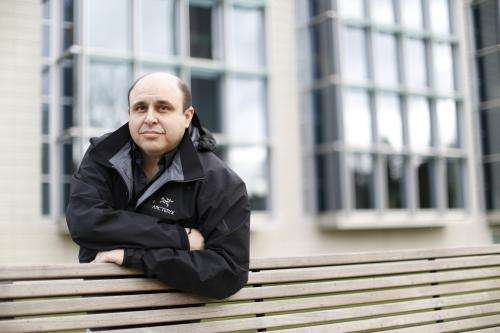Study shows why innovation takes a nosedive

A new UBC study reveals that corporate leaders are victims of herd mentality when adopting new innovations, sometimes with deadly consequences.
The paper, by Sauder School of Business Associate Professor Marc-David L. Seidel and INSEAD Professor Henrich R. Greve, shows leaders tend to pursue innovations, even as complex as airplanes, based on early adoption by competitors not close scrutiny of the technical merits.
"Business leaders tend to panic when new innovations are about to hit the market. They scramble to buy an apparent early leader," says Seidel. "Sometimes this results in inferior products, but as we show in our study, in the airline industry there was loss of life."
Among a series of innovations, the authors focused on two almost identical aircraft produced in the 1970s – the McDonnell Douglas DC-10 and Lockheed L-1011. Dubbed "The Twins," their manufacturers were locked in bitter rivalry.
Component delays slowed the L-1011's entry into the market by a year. Lack of sales characterized it as a failed innovation with only 250 sold compared to 486 DC-10s.
But the DC-10 suffered design flaws that proved deadly, killing over 600 people in a number of crashes. In 1979, it was temporarily grounded by the Federal Aviation Administration but this did not stop its advance.
In the paper, Seidel and Greve warn there is potential for history to repeat itself as Boeing's 787 Dreamliner and its rival the Airbus A350 head to market.
Early groundings and production delays of the Dreamliner resulted in airlines snapping up more of the rival Airbus before it had completed flight testing or carried passengers.
"We can't say the bias to purchase the Airbus will result in negative events," says Seidel. "We won't know if mistakes are being made for some time. But I can say the lesson of history should be guiding current practice."
More information: To arrive at the conclusions of the study, Seidel and Greve analysed the complete manufacturing history of both the DC-10 and L-1011 airplanes, their sales patterns, abandonments and data on airline customers.
The study The Thin Red Line between Success and Failure: Path Dependence in the Diffusion of Innovative Production Technologies, was co-authored by Sauder School of Business Associate Professor Marc-David L. Seidel and Professor Henrich R. Greve of INSEAD. It was published on January 15 in the Strategic Management Journal.
Provided by University of British Columbia





















